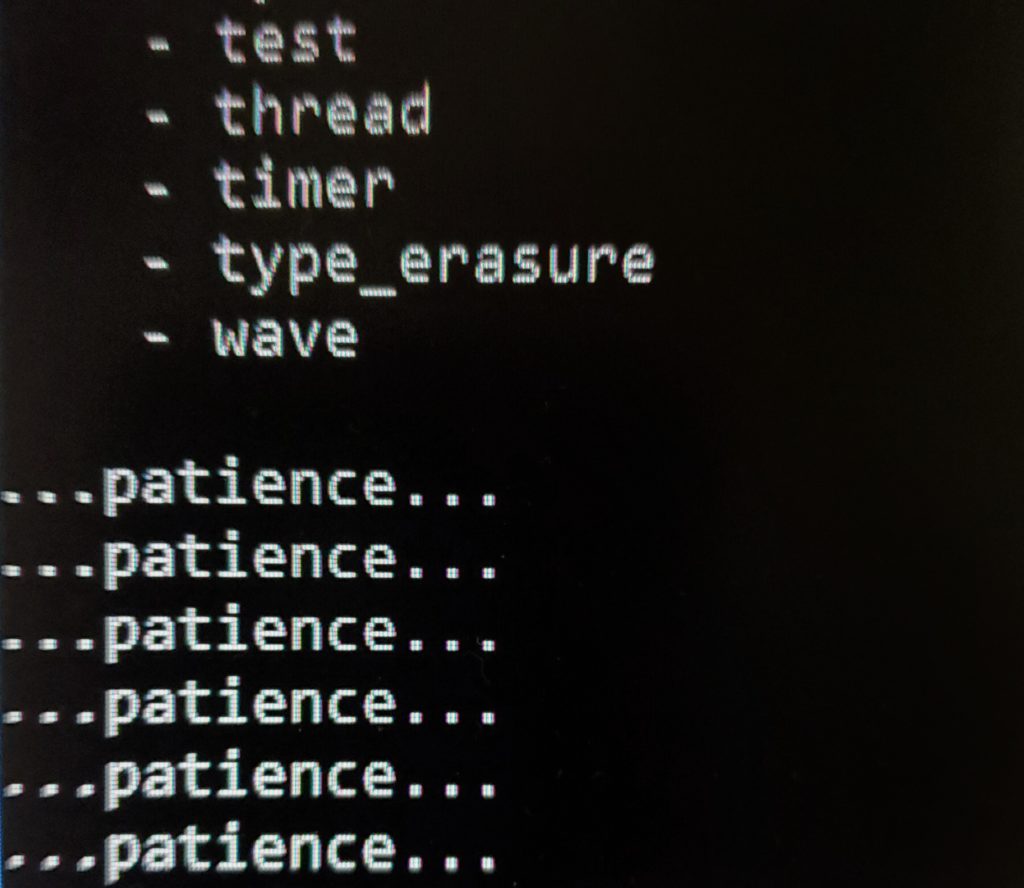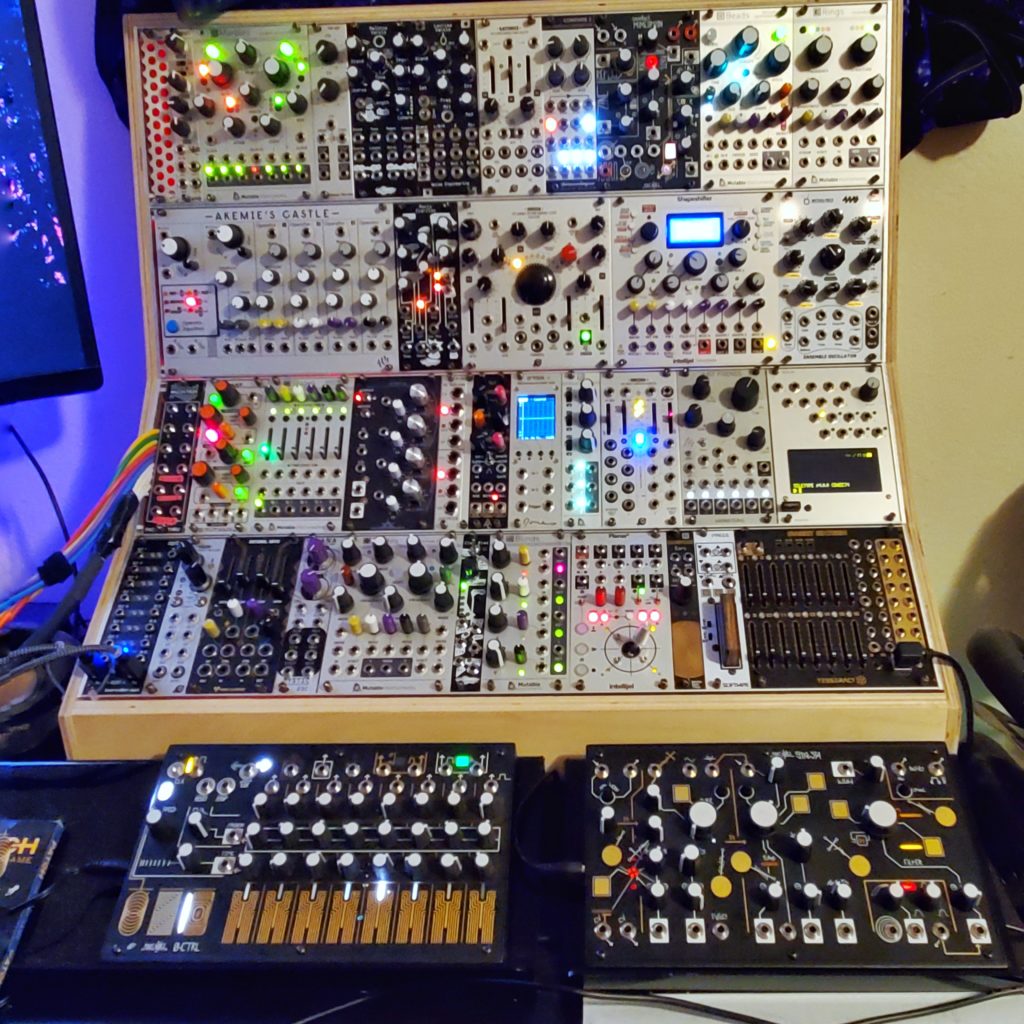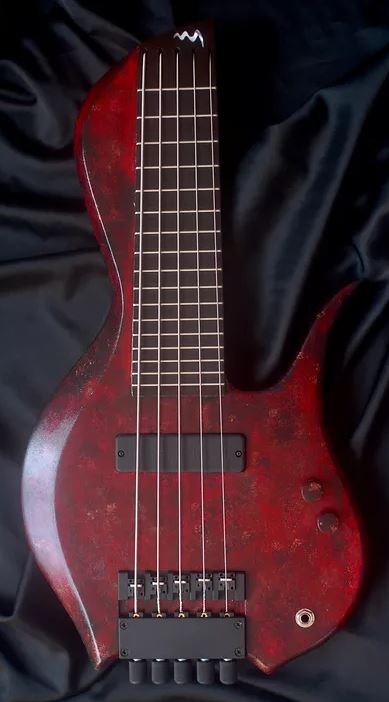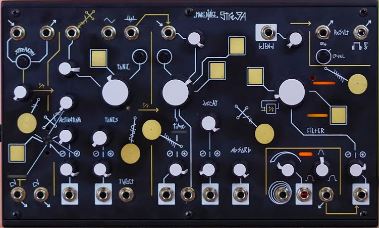We’re back from our 9 day vacation (+1 day for recovery). The visit with my parents was nice and peaceful. Bringing instruments (my bass uke, her dulcimer) turned out to be a great idea and I’m sure we’ll do that again. Since so many folk songs that my spouse plays are in D, I tried dropping my tuning to DGCF but the strings are way too floppy that way. Drop-D tuning (DADG) works, but can be a bit confusing, so most likely I’ll just stick to EADG on the uke at least. Maybe the LaBella strings on the Mikro will be up for DGCF. At any rate, it gave us something fun to do, our families seemed to enjoy it to some extent as well, and I’ve maintained the minor callouses on my left hand fingers. 😉
In my parents’ backyard we saw plenty of birds, deer once, and a fox in the evening right as we were getting ready to leave. We played a couple of board games, watched Captain Marvel and a few TV shows that were not too bad considering, ate some experimental meals that my mom made which mostly turned out quite well, watched my dad’s slide shows for the last couple of years, and just hung around.
The next step was to drive to Atlanta in the dark and rain, and it reminded me how much I dislike Atlanta. But our morning visit to Georgia Aquarium was pretty fantastic — even without a stingray touch pool, I’d put it at a very close second to Shedd (Chicago), right alongside Tennessee Aquarium (Chattanooga) or Ripley’s Aquarium (Gatlinburg). (The St. Louis Aquarium is more modest yet still worth a visit if you’re in town.) They have the largest tank in the world at 6.3 million gallons, which houses a whale shark and mantas among many other things; they also have a big shark tank and a beluga tank, and a nice variety of other animals as well, including all my personal favorites. We didn’t do any of the “optional” ticketed shows since the goal was to go through and then hit the road, but it was still about 2.5 hours of stuff to see. I took something like 150 pictures, and it took three rounds of culling to bring that down to 19 photos and 3 videos to post on Instagram.
The drive to my in-laws’ new house from Atlanta is just slightly shorter than from our house to my parents, though with fewer traffic snarls. The new place is pretty nice, with a bunch of land in the back — the chickens are all set up, but the goats are still at their old place which they’re sloooowly moving out of. My mother-in-law has an erhu (Chinese spike fiddle) that she hadn’t set up yet, so I learned a little about it, tuned it up and started to rosin the bow (but it really needs a lot more rosin for a good tone). It’s an unusual instrument to me, in that the horsehair of the bow can be disconnected and is threaded between the two strings (tuned to A440 and D below that), and the nut is made from string, surprisingly far down the neck. There’s no fretboard to press the strings against, it’s just finger pressure as needed. It’s a pretty neat instrument though and I could see getting one maybe… but I feel I should concentrate on synth and bass.
The official justification for this trip was my nephew’s second birthday party. He’s a cute kid with an infectious laugh — fond of dinosaurs and frogs, red and orange, and throwing balls at peoples’ faces before announcing “catch!” I’m glad I finally got to meet him. He got approximately a million toys for his birthday and I’m pretty sure he deserves them all.
The drive back home was shorter and generally less traffic-filled and stressful — but by that time I had developed a nasty persistent backache which I’ve been unable to shake. It’s high enough I can’t apply Aspercreme myself, and I’m not sure that would help. Lying down flat, the pain almost entirely disappears. Unlike my usual aches, a heating pad is pretty marginal. The shiatsu massager or my wife’s efforts are a bit more helpful but it’s not long before the pain creeps back. I tried a Salonpas pad that’s supposed to bring 10 hours of relief, and it was more like…. 10 minutes of nothing, then 15 minutes of discomfort, then 7 hours of some help, and I still keep smelling menthol even though it’s been another 12 hours and I’ve showered since then. Weird.
Music! After doing some online research during the trip, I’ve bought a Launchpad Pro mk3. The main feature it offers over the Launchpad X I have now is a very friendly standalone sequencer mode. There’s some concern that they’ve changed the pad response significantly and it might be better at velocity and a little worse at pressure, but probably tweakable enough in software to make me happy. My thinking here is that the main reason I have been holding on to the Microfreak isn’t necessarily its synth capabilities — which are fine but not really outstanding compared to the modular, Minibrute or my software collection — but its controller/arpeggiator/sequencer combo. So the LPPmk3 could replace both the LPX and Microfreak, leaving room for a Strega if I choose to pick one up, or just consolidating if not.
Also while I was away, the Noise Engineering “Bundle 1” plugins were released: Cursus Vereo, Basimilus Iteritas and Desmodus. I’ve owned both Basimilus and Cursus in Eurorack form and moved on from them but I’m very happy to have them in this format for occasional use, and Desmodus even more so. Basimilus struck me as a killer kick drum module but I so rarely need kick drums; in plugin form and polyphonic its versatility stands out a bit more. Likewise, Cursus feels like a different beast as a polyphonic plugin than an oscillator. It was one of many “this is good but I have too many oscillators” choices. And the Desmodus plugin is not-so-secretly both Desmodus and Electus (with sync) and its variety shines in this format too — and also lets me feel more free to keep running Melotus and Lacrima on my two Versio modules without dipping back to the Desmodus firmware on occasion.
Befaco Noise Plethora — not one I’d paid too much attention to before — also dropped as a VCV Rack plugin, and it’s pretty great. A dual digital noise generator with 30 different algorithms (independently selectable) and analog filters, plus a white noise with “grit” generator and another filter. Some of the algorithms are clusters of oscillators, reminiscent of the Odessa, and if it had volt-per-octave tracking and linear TZFM I might actually have been tempted to free up the Odessa. But for me it’s a nice free addition to the already amazing VCV.
And Bitwig 4.2 has left beta and become official. This is the update that adds MIDI manipulation to the Grid, which opens up a lot of hybrid sequencing and processing of controllers.
So I have a lot to explore. I do have an idea for the next album but in retrospect it seems like an idea for part of an album — a suite or concerto perhaps.





